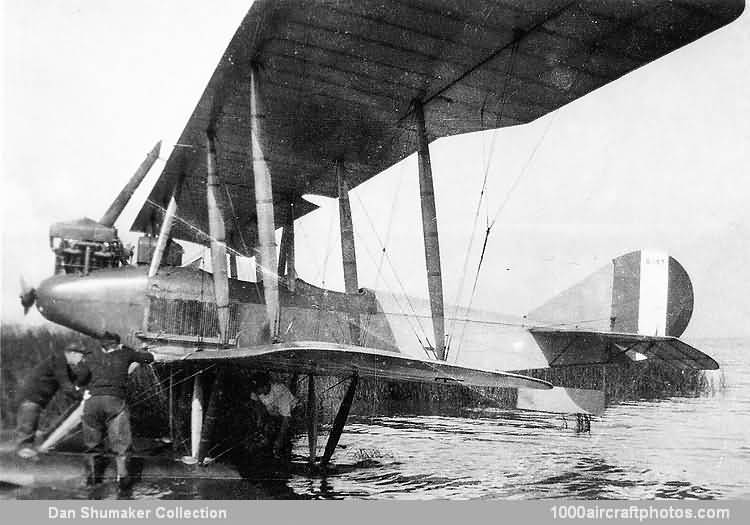The 39-As used the 100 hp Hall-Scott A-7A four-cylinder liquid-cooled in-line engine with side mounted coolers and the seaplane versions had twin wooden floats; the first aircraft was delivered in June 1917. The 39-B was powered by the 100 hp Curtiss OXX-6 eight-cylinder liquid-cooled V-engine with cabane mounted coolers, the seaplanes having the single main pontoon with small wing tip floats for stability which the Navy preferred for its training and service seaplanes and was to retain until seaplane trainers were dropped from the inventory in 1960.
A number of the 39-Bs survived WW I, and two were used for the Navy's early experiments in deck landing. Various types of arrester gear were tried on a dummy carrier deck at Langley Field, Hampton, Virginia, in 1921. The aircraft was fitted with the forerunner of the modern hook that engaged the cross-deck arrester cables, while alignment hooks were fitted to the landing gear to engage longitudinal wires on the deck to keep the machine running straight. In anticipation of forced landings at sea in the course of later operations from shipboard, a hydrovane was fitted ahead of the wheels to prevent nosing over on alighting.
On October 26, 1922, a 39-B piloted by Lt.Cdr. Geoffrey DeChevalier, Naval Aviator No. 7, made the first landing on the deck of the Navy's first aircraft carrier, the USS Langley, a converted collier. This was nine days after the first take off had been made in a Vought VE-7.
The pictured aircraft shows in error on the fin the BuNo. A-143 allotted to an Aeromarine 700, which was a three-bay biplane."
|
A |
39-A |
39-B |
